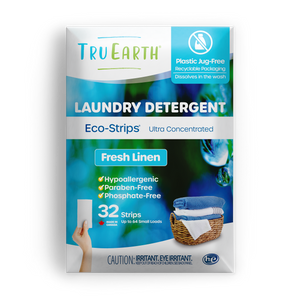Playtime is an essential aspect of a child's development, fostering creativity, imagination, and social skills. However, it often involves a multitude of toys, packaging, and materials that contribute to environmental waste.
As responsible caregivers, there are practical and straightforward steps we can take to reduce the ecological footprint of our children's playtime routines. In this guide, we'll explore strategies to promote sustainable play without compromising on the joy and learning experiences it brings.

Choose Sustainable Toys
The foundation of waste reduction in playtime starts with the toys we choose. Opt for items made from eco-friendly materials such as wood, bamboo, or recycled plastic.
These materials are not only durable but also reduce the environmental impact compared to traditional plastic toys. Look for products with minimal packaging or packaging made from recycled materials to further minimize waste.
Encourage Toy Rotation
Children often have an abundance of toys, but they tend to gravitate towards favorites. Instead of constantly buying new toys, consider implementing a toy rotation system.
Store some toys away and periodically swap them with the ones your child is currently playing with. This not only keeps playtime exciting but also reduces the overall number of toys in circulation.
Repurpose Household Items
Encourage creativity by incorporating household items into play. Cardboard boxes, for instance, can become forts or spaceships, while old sheets can transform into tents.
Repurposing items not only sparks imagination but also reduces the need for additional materials. It's an excellent way to teach children about resourcefulness and the value of reusing items.
Educate on Recycling
As part of the playtime routine, educate your children about the importance of recycling. Set up designated bins for different types of waste, and involve them in the sorting process. Understanding the significance of recycling at an early age instills lifelong habits that contribute to a more sustainable future.
Invest in Quality, Not Quantity
In a world of fast-paced consumerism, it's easy to fall into the trap of constantly buying new toys. Instead, focus on investing in high-quality, durable items that can withstand the test of time.
Well-made toys not only last longer but can also be passed down to younger siblings or friends, reducing the overall waste generated.
Host Eco-Friendly Playdates
Extend the eco-friendly ethos beyond your home by organizing playdates with like-minded families. Share ideas on sustainable play and exchange toys that are no longer in use. This not only broadens the range of toys available but also fosters a sense of community and shared responsibility for the environment.
Create DIY Crafts
Engage your children in the joy of crafting by making DIY toys and projects. Use materials like paper, cardboard, and fabric scraps to create unique items.
This not only reduces waste but also nurtures their creativity and resourcefulness. Consider crafting sessions as an opportunity to bond while instilling values of sustainability.
Teach Mindful Consumption
Being inundated with advertisements targeting children, it's important to teach them about mindful consumption.
Discuss the difference between wants and needs, and encourage them to think critically about the items they desire. By instilling a sense of responsibility and consciousness, you empower your children to make environmentally conscious choices.
Practice Toy Repair
When a toy inevitably breaks, consider repairing it instead of immediately replacing it. Teach your children basic repair skills or involve them in the process. This not only extends the life of the toy but also imparts valuable lessons about resourcefulness and the environmental impact of constant replacements.
Why Sustainability in Children's Routines Is Important
Ensuring sustainability in children's routines is key for several reasons, encompassing both the well-being of the child and the broader impact on the environment.
Environmental Stewardship Education
By incorporating sustainable practices into children's routines, caregivers have a unique opportunity to instill environmental stewardship values from an early age.
Teaching children about the importance of reducing waste and making eco-friendly choices contributes to a generation that is more conscious of their impact on the planet.
Long-Term Habit Formation
Childhood habits often carry into adulthood. Introducing sustainable practices at a young age helps in establishing lifelong habits of responsible consumption, waste reduction, and environmental mindfulness. Children exposed to sustainability in their routines are more likely to carry these values into their adult lives.
Resource Conservation
Teaching children the significance of sustainable living emphasizes the finite nature of Earth's resources. This understanding encourages responsible resource consumption, reducing the strain on ecosystems and promoting a more balanced coexistence with the environment.
Connection to Nature
Sustainable practices in routines create opportunities for children to develop a deeper connection with nature. Whether it's through recycling, gardening, or using eco-friendly toys, these activities foster an appreciation for the environment, promoting a sense of responsibility toward its preservation.
Health and Well-being
Many sustainable practices also contribute to a healthier lifestyle for children. For instance, using non-toxic, eco-friendly materials in toys reduces exposure to harmful chemicals.
Additionally, engaging in outdoor activities and nature-based play supports physical and mental well-being, creating a holistic approach to child development.
Global Awareness and Empathy
Sustainability in routines helps children understand their place in a global community. Learning about the interconnectedness of ecosystems and the impact of individual choices on a larger scale fosters empathy and a sense of shared responsibility for the well-being of the planet.

Green Playtime: Nurturing Sustainable Fun for Kids
Promoting sustainability in your children's playtime routines doesn't have to be difficult. By making mindful choices in toy selection, encouraging creativity with repurposed items, and instilling values of recycling and resourcefulness, you contribute to a greener future.
The goal is not to eliminate playtime joy but to align it with responsible practices that benefit both your children and the planet.


